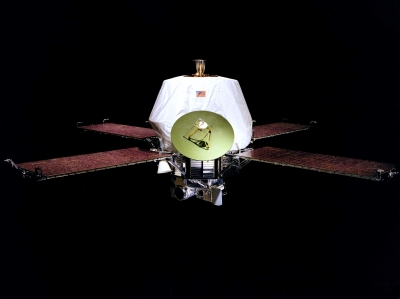
After the launch failure of its Mariner 8 spacecraft on 9 May 1971, the U.S. National Aeronautics and Space Administration (NASA) launched Mariner 9 on the 30th of the same month. It was a late start compared to the Soviet Union’s (present-day Russia) Mars 2 and Mars 3 missions launched on 19 and 28 May, respectively. But Mariner 9 overtook them and became the first spacecraft to orbit another planet! It entered the orbit of Mars on 14 November 1971, with a lead of 13 days over its contender, Mars 2 of the Soviet Union.
But it was not ribbons and confetti that greeted the winner; it was a full – “blown” Martian dust storm that had hidden almost the entire planet from view! Imaging, therefore, was postponed for about two months by re-programming Mariner 9 from the Earth. Unfortunately, this was not an option for the Soviet Union’s Mars 2 and 3, and these orbiters wasted data resources by merely taking photographs of dust clouds that revealed none of the features of Mars.
In contrast, Mariner 9 out-performed its target of covering 70 per cent of the Martian surface by imaging 85 per cent instead! The whopping 7,329 photographs it took, including those of the most prominent features on Mars such as the Olympus Mons, Valles Marineris, and many other volcanoes and flow channels, improved our knowledge of the Red Planet by leaps and bounds! Mariner 9 also captured the Martian moons, Deimos, and Phobos. In fact, the Valles Marineris canyon is named in honour of the spacecraft!
Picture Credit : Google




